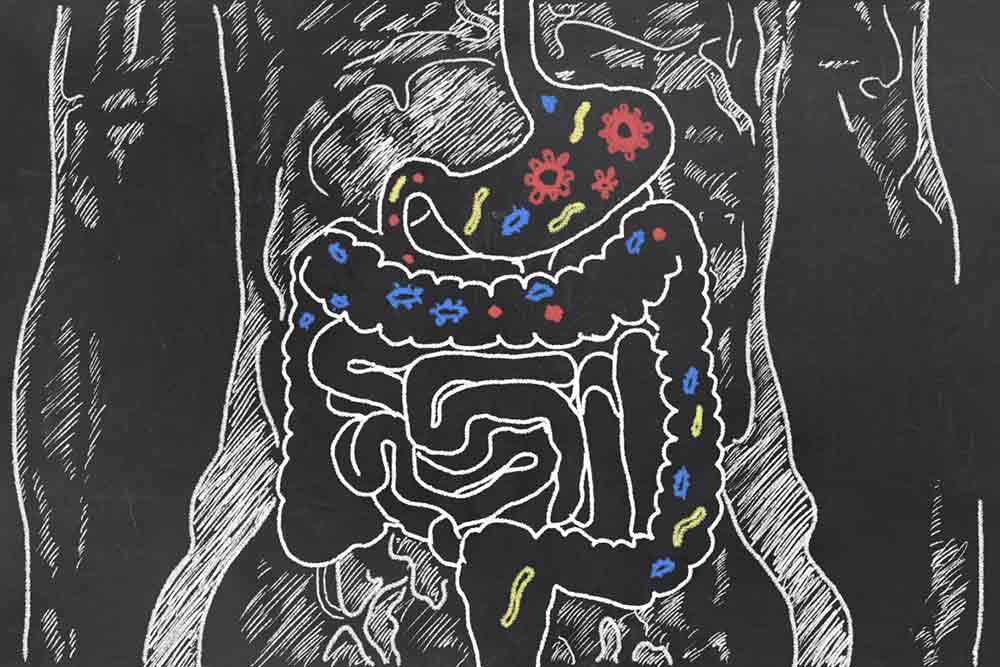Athletes May Be Suffering From Vitamin D Deficiency

Moji Kaviani, Ph.D., CEP
If you are not getting out a few times per week for about 10-20 minutes to get some full body sunshine, which it is more likely with winter just around the corner, then don’t think twice about vitamin D supplementation.
 Over the past decade interest in Vitamin D has exploded. The reason for this increase in interest is partly due to the re-emergence of the debilitating bone disease rickets, but also due to a better understanding of the many biological roles of this ‘prohormone’.
Over the past decade interest in Vitamin D has exploded. The reason for this increase in interest is partly due to the re-emergence of the debilitating bone disease rickets, but also due to a better understanding of the many biological roles of this ‘prohormone’.
It is now known that many tissues in the human body express the vitamin D receptor suggesting that Vitamin D (or more specifically active vitamin D metabolites) play a fundamental physiological role that have previously been somewhat ignored. It is now clear that both innate and acquired immune function, cardiovascular health and even muscle growth and repair may be regulated by vitamin D.
This emerging knowledge, combined with a plethora of research suggesting that many athletes are vitamin D deficient, largely due to a sun-shy lifestyle and poor dietary sources of vitamin D, even those living in sunny climates has resulted in vitamin D being one of the most widely supplemented vitamins in sports nutrition.
Related Article: Gene-base Nutrition: Can It Benefit You?
Athletic Populations
It must be stressed that direct evidence indicating a performance enhancing effect of vitamin D in athletic populations is at best equivocal. Whilst some studies have shown improved markers of muscle function the majority have failed to show any meaningful effects. Perhaps the main reason for the discrepancies lies with the baseline vitamin D concentration. Classification of vitamin D deficiency is complex and subject to significant debate.
Currently the US Institute of Medicine state that 450 nmol/L is sufficient although many leading researchers seriously question this as being too conservative. In our laboratory, we have reported detrimental effects on muscle function when concentrations are below 30 nmol/L with no performance enhancing effects of vitamin D supplements if the starting concentration is around 50 nmol/L.
In terms of a supplemental dose, the European Food Safety Authority have recently stated that 4000iU is the maximum dose that should be used which we have also shown to be an effective dose in correcting deficiencies. Recent work from our group has also demonstrated that vitamin D deficiencies may impair muscle regeneration and perhaps more importantly this effect may occur even when vitamin D concentrations are around 50 nmol/L.
Related Article: Precision Nutrition And You: Nutrigenomic Approaches To Disease And Health
Most Individuals Are Not Getting Enough
The one thing we certainly know is that you probably aren’t getting enough
Recent research in the United States has shown us that 61% of children and adolescents are vitamin D insufficient, with this number growing to 77% for adults (Constantini et al., 2010). Research also showed that 73% of the participants in a study were vitamin D insufficient and that indoor sports had twice the rate of insufficiency (Constantini et al., 2010).
In a different study that examined basketball players in the winter found that 57% of participants were vitamin D deficient, and only 2 subjects showed a value of vitamin D within the preferred range (Garcia & Rodriguez Guisado, 2011). The AI for vitamin D is 400IU, where serum levels of 30ng/mL or more is considered sufficient (Miller et al., 2010). In the UK, deficiency is defined as a serum concentration below 10 ng/mL (Close et al., 2013). There are obvious discrepancies between what values are considered deficient, insufficient and sufficient.
Performance Effects
There is little known about performance effects from vitamin D deficiency (Hamilton, 2009). Speculation has risen around its effects on muscle and performance in recent years (Hamilton, 2009). Some authors suspect performance may decrease when vitamin D is not available in adequate levels (Hamilton, 2009). Vitamin D has been associated with muscle weakness and has long been linked with rickets and osteomalacia (Hamilton, 2009) (Miller et al., 2010). Along with this, musculoskeletal pain and weakness are often overlooked as a symptom of vitamin D deficiency (Larson-Meyer & Willis, 2010). Deficiency is linked to increased risks for chronic and autoimmune disorders, which include hypertension, cardiovascular disease, osteoarthritis and depression (Larson-Meyer & Willis, 2010).
Related Article: Food Vs Protein Supplements
Calcium & Vitamin D
Calcium and vitamin D metabolism are connected (Garcia & Rodriguez Guisado, 2011). Vitamin D plays a role in the intestinal absorption of calcium by facilitating active calcium transport across the intestinal mucosa (Garcia & Rodriguez Guisado, 2011). The efficiency of calcium to be absorb increased in line with a serum 25(OH)D level up to ~80nmol/l (Garcia & Rodriguez Guisado, 2011). Vitamin D influences bone health by upregulating the expression of genes that increase osteoclastic activity (Larson-Meyer & Willis, 2010). Serum 25(OH)D concentration correlates with bone mineral density in the hip and lumbar spine of both younger and older women (Larson-Meyer & Willis, 2010).
Calcium gives bone its strength, and the bone is the primary storage location for calcium in the human body (Tenforde, Sayres, Sainani, & Fredericson, 2010). Vitamin D promotes the absorption of calcium in the intestines and enhances bone growth and remodeling (Tenforde et al., 2010).
There is evidence showing that sufficient vitamin D status is important for bone health and also in preventing stress fractures (Larson-Meyer & Willis, 2010). It was shown that risk of stress fracture increased when serum 25(OH)D fell below 30ng/ml (Larson-Meyer & Willis, 2010). Vitamin D deficiency does not only increase the risk of stress-related fractures but also in osteoporotic fractures (Hamilton, 2009). Based on these findings, the optimum 25(OH)D concentration for athletic performance may be much higher than the sufficient 25(OH)D concentration for adequate bone health (Close et al., 2013).
Related Article: How Fruits & Veggies Counteract Chronic Disease
Athletes May Need Higher Vitamin D Intake To Optimize Performance
Recent research is showing that vitamin D may not only play a role in bone health, but also in muscle contraction. It has been shown on multiple occasions that athletes are deficient and insufficient in 25(OH)D, which has been affecting performance (Hamilton, 2009). Calcium and vitamin D work together to increase ATP in a muscle and enhance muscle contraction (Miller et al., 2010). It has been shown that athletes deficient in vitamin D exert less force during multiple exercise tests (Close et al., 2013).
Vitamin D is also key to preventing stress or osteoporotic-related fractures, which is of interest to athletes susceptible to injury due to their sport (Hamilton, 2009). Athletes who participate in sports where body mass is monitored may be most at risk for vitamin D deficiency (Tenforde et al., 2010). 90% of peak bone mass is attained by age 18, making vitamin D and calcium levels important for young athletes (Tenforde et al., 2010).
Cutting weight, restricting diet and elimination of dairy products can put an individual at higher risk of vitamin D and calcium insufficiencies and deficiencies but also at risk of fractures. Overall, it is very important for athletes to be sufficient in vitamin D at all times, to enhance performance and prevent injuries.
Factors Affecting Rate & Synthesis Of Endogenously Produced Vitamin D
- Vitamin D is essential for intestinal absorption of calcium and phosphorous and thus bone health
- To some extent, because of Vitamin D biological functions, it might make you faster, quicker and stronger.
- For certain, supplementing with Vitamin D is NOT waste of money.
You Might Like:
The World’s Most Powerful Antioxidant: Glutathione
Over the last couple of years Glutathione has made a bit of splash in the supplement industry, where it has been touted as one of the most powerful products to hit the market in years....What Are Probiotics and Prebiotics?
Alyssa Bialowas In response to the current cultural nutrition trend surrounding probiotics and supplements, pharmacies and health food stores are stocking increased amounts of probiotic supplements. Is this just the latest health and nutrition trend...High-Intensity Interval Training: How to Meet Nutritional Demands
Moji Kaviani, Ph.D., CEP Nutrition plays a key role in maximizing the training benefits and recovery of individuals engaging in high-intensity interval training. With HIIT being a form of exercise, it is important to consider...The Next Best Supplement For Exercise Performance
A Review by Alyssa Bialowas Korean Ginseng is a nutraceutical herbal supplement, that when ingested offers benefits such as stress management and resistance to fatigue. Following an acute bout of resistance exercise, Korean Ginseng is...DHA Supplementation Reduces Inflammation After Exercise
Alyssa Bialowas Introduction to DHA Supplementation Docosahexaenoic acid (DHA) is an omega-3 fatty acid. It is essential for the growth and functional development of the infant brain. It is a primary structural component and required...Creatine Supplementation and Adaptive Response to HIIT for Women
Moji Kaviani, Ph.D., CEP High-intensity-interval training (HIIT) has several well-established performance and health benefits. These include improving body composition, cholesterol, and cardiorespiratory fitness. In the hope of seeing further metabolic and physiological benefits., researchers are...References
Annweiler et al. (2017).Vitamin D and walking speed in older adults: Systematic review and meta-analysis. 106:8-25. doi: 10.1016/j.maturitas
Close, G. L., Russell, J., Cobley, J. N., Owens, D. J., Wilson, G., Gregson, W., … Morton, J. P. (2013). Assessment of vitamin D concentration in non-supplemented professional athletes and healthy adults during the winter months in the UK: implications for skeletal muscle function. Journal of Sports Sciences, 31(4), 344–353. https://doi.org/10.1080/02640414.2012.733822
Constantini, N. W., Arieli, R., Chodick, G., & Dubnov-Raz, G. (2010). High Prevalence of Vitamin D Insufficiency in Athletes and Dancers: Clinical Journal of Sport Medicine, 20(5), 368–371. https://doi.org/10.1097/JSM.0b013e3181f207f2
Garcia, R. B., & Rodriguez Guisado, F. A. (2011). Low levels of vitamin D in professional basketball players after wintertime: relationship with dietary intake of vitamin D and calcium. Nutrition Hospital, 26(5), 945–951.
Hamilton, B. (2009). Vitamin D and Human Skeletal Muscle. Scandinavian Journal of Medicine & Science in Sports. https://doi.org/10.1111/j.1600-0838.2009.01016.x
Larson-Meyer, D. E., & Willis, K. S. (2010). Vitamin D and Athletes: Current Sports Medicine Reports, 9(4), 220–226. https://doi.org/10.1249/JSR.0b013e3181e7dd45
Miller, M. G., Cheatham, C. C., & Patel, N. D. (2010). Resistance Training for Adolescents. Pediatric Clinics of North America, 57(3), 671–682. https://doi.org/10.1016/j.pcl.2010.02.009
Tenforde, A. S., Sayres, L. C., Sainani, K. L., & Fredericson, M. (2010). Evaluating the Relationship of Calcium and Vitamin D in the Prevention of Stress Fracture Injuries in the Young Athlete: A Review of the Literature. PM&R, 2(10), 945–949. https://doi.org/10.1016/j.pmrj.2010.05.006











